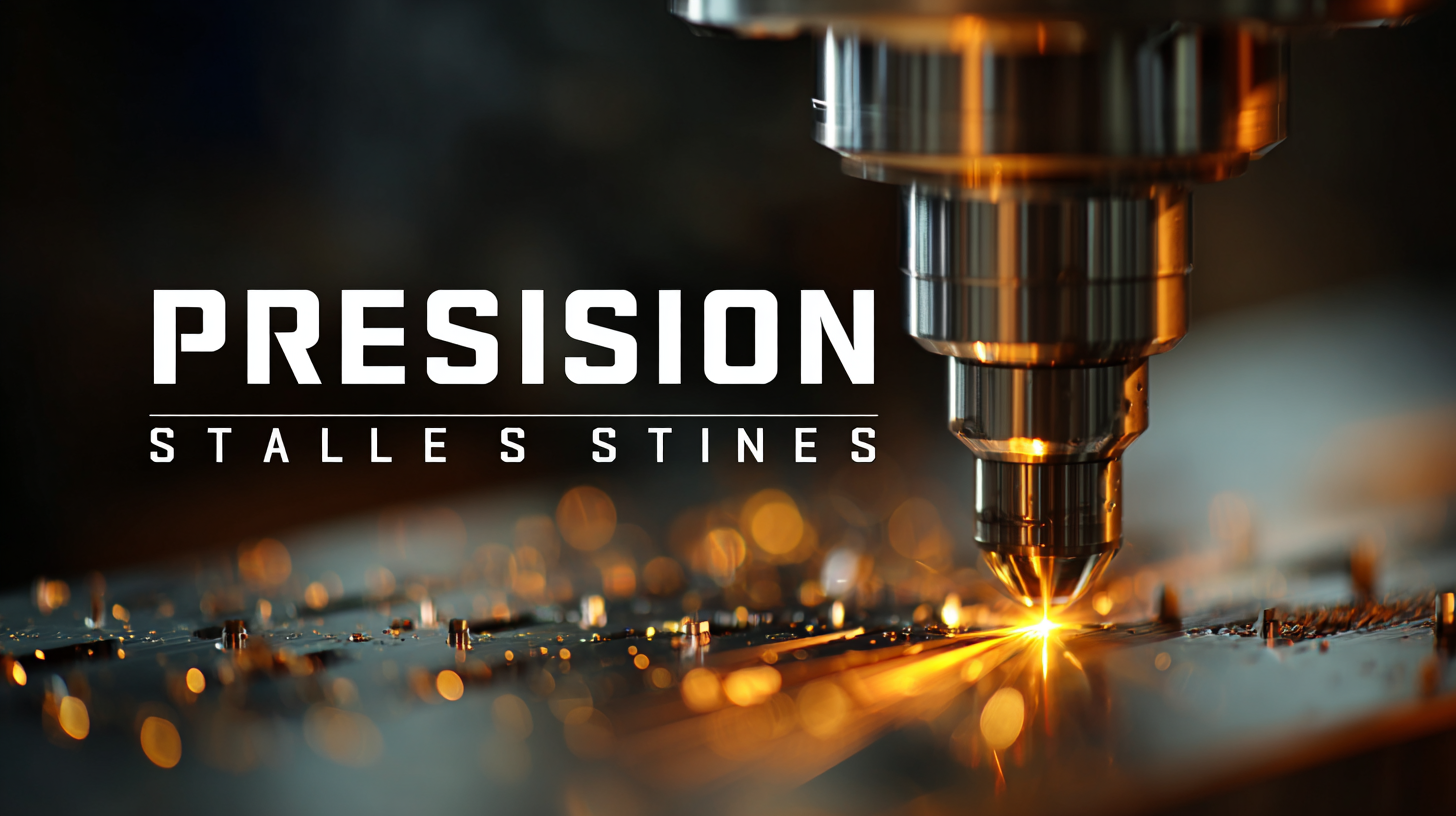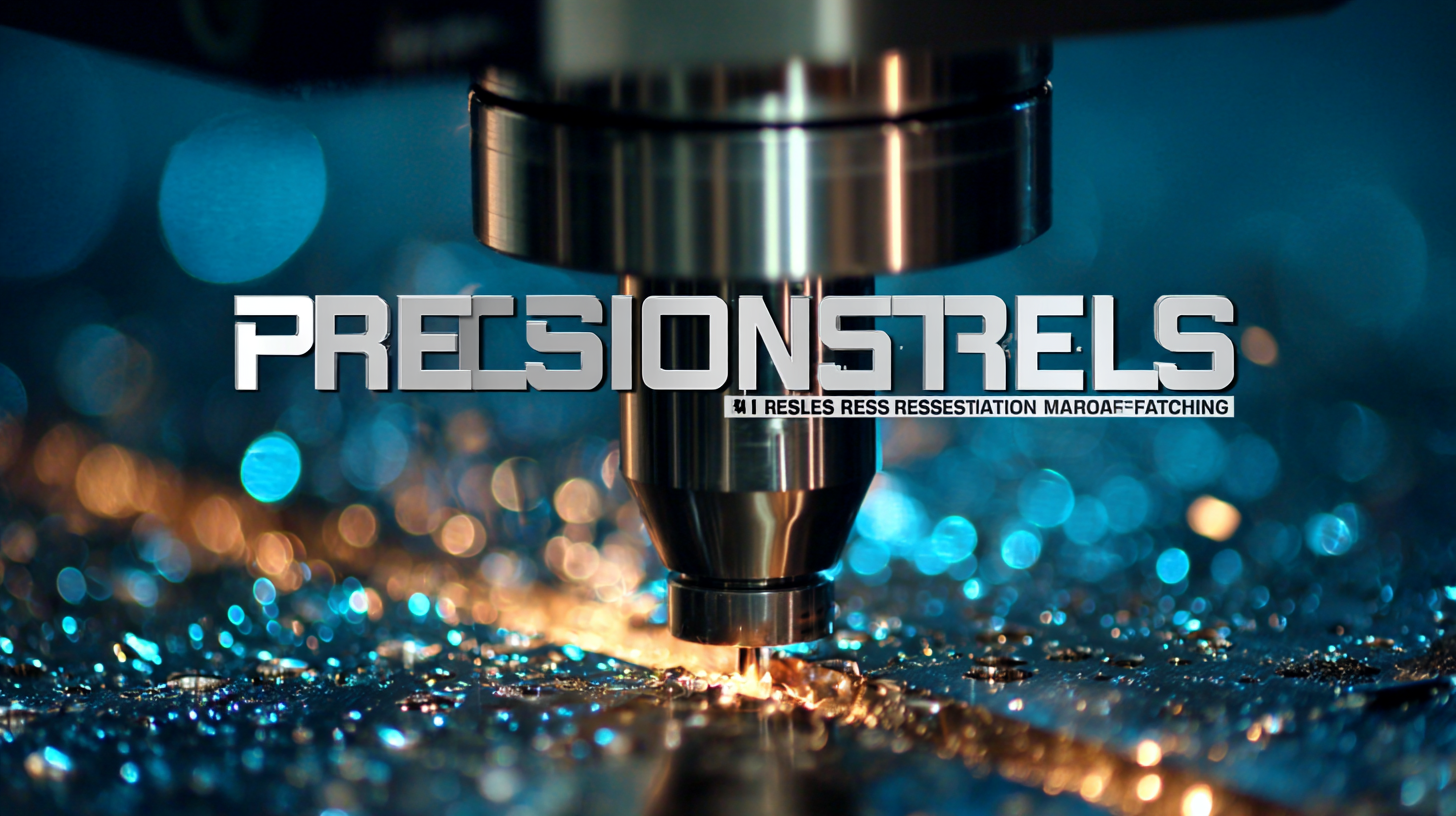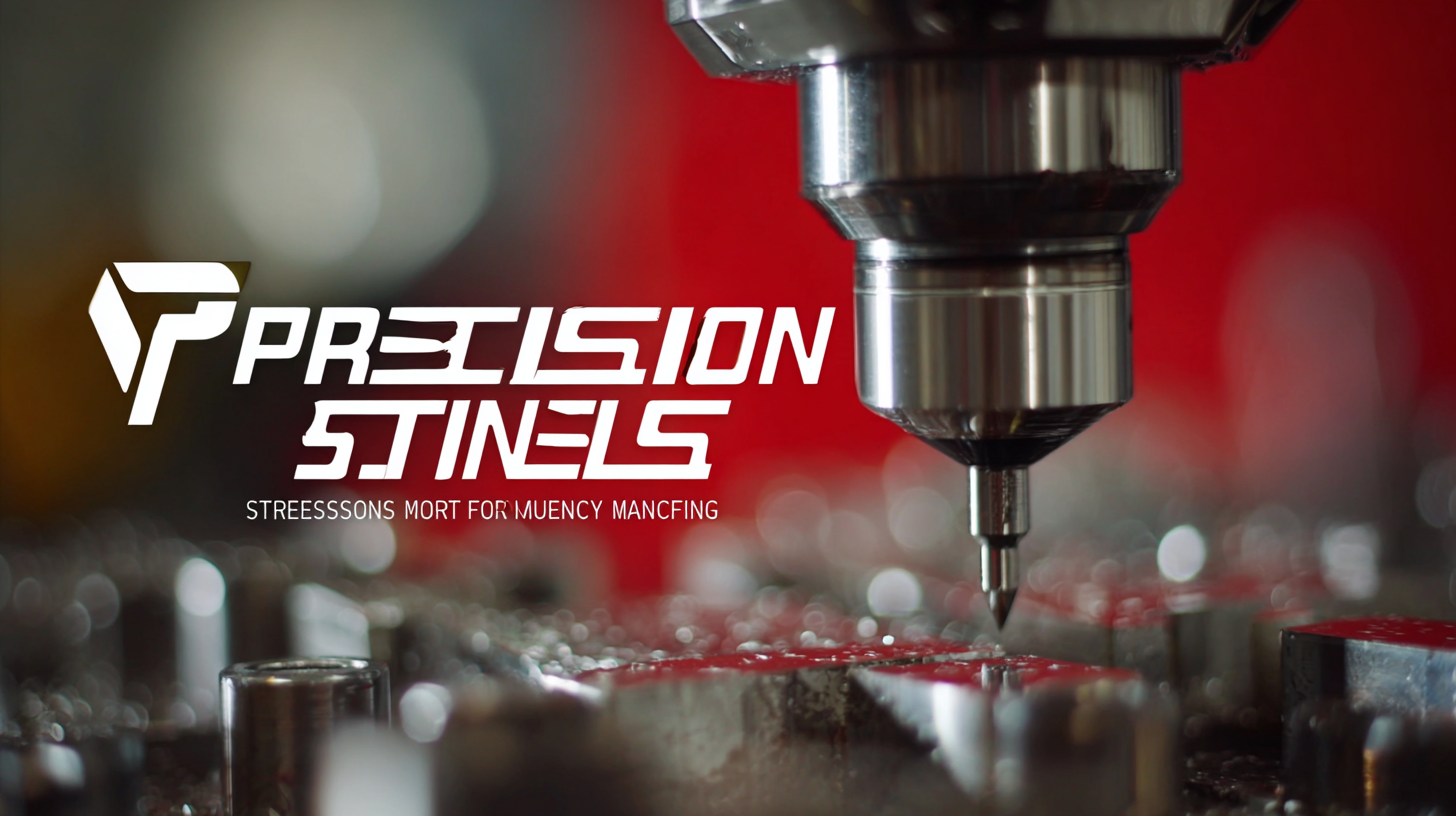


In the ever-evolving landscape of modern manufacturing, the choice of materials can significantly impact product quality and efficiency. Among the various materials available, Precision Stainless Steel stands out as a cornerstone for industries ranging from aerospace to medical devices. According to a recent market report by Grand View Research, the global stainless steel market is projected to reach USD 195.4 billion by 2025, driven by the growing demand for high-performance materials. Precision Stainless Steel offers unparalleled strength, resistance to corrosion, and dimensional accuracy, making it essential for manufacturing processes that require stringent tolerances. Furthermore, a study by the American Society of Metals highlights that products made from precision-engineered stainless steel outperform others in durability and lifecycle cost-effectiveness by nearly 30%. As industries continue to prioritize innovation and quality, understanding the critical role of Precision Stainless Steel becomes imperative for manufacturers aiming to stay competitive.

Precision stainless steel has become a cornerstone in modern manufacturing, significantly enhancing product quality across various industries. A report by the International Stainless Steel Forum (ISSF) indicates that in sectors such as aerospace and medical device manufacturing, the use of high-quality stainless steel increases product lifespan by up to 40%. This improvement is primarily due to its superior resistance to corrosion and wear, which ensures that products maintain their integrity even under harsh conditions.
Moreover, the precision in manufacturing processes enabled by advanced stainless steel technologies leads to tighter tolerances and better overall performance. According to a recent study published in the Journal of Materials Engineering, components made from precision stainless steel showed a 25% increase in operational efficiency compared to those manufactured with lower-grade materials. This is crucial in competitive industries, where even minor enhancements in product reliability can significantly impact market performance. With the integration of this material, manufacturers can meet stringent quality standards while simultaneously reducing long-term costs associated with maintenance and replacement.
This chart illustrates the importance of various factors that contribute to the quality of products in modern manufacturing using precision stainless steel. Each criterion highlights a key aspect in which precision stainless steel enhances product performance and durability.
The rise of innovative manufacturing processes is undeniably intertwined with the adoption of precision stainless steel, a material known for its strength, durability, and resistance to corrosive environments. As industries embrace additive manufacturing, experts highlight that the trend is not just about fabrication speed but also about material efficiency. According to recent research, the global stainless steel market is anticipated to grow significantly, propelled by its applications in sectors like aerospace and automotive, where high-performance materials are essential. This shift toward advanced manufacturing solutions underscores the need for quality stainless steel that meets stringent performance standards.
Tip: When selecting stainless steel for manufacturing, consider its specific grades and properties that align with the intended application. For instance, 316-grade stainless steel is often preferred in marine environments due to its superior corrosion resistance.
Incorporating technologies such as Virtual Twin can further enhance the manufacturing process by allowing companies to simulate and optimize operations, thereby reducing waste and carbon footprints. With key industry players adopting these smart technologies, the integration of precision stainless steel becomes increasingly vital. Industry reports suggest that sustainable manufacturing will continue to be a priority, and utilizing high-quality materials is a significant step in achieving those environmental goals.
Tip: Always assess the lifecycle of the stainless steel products you choose; prioritize those that not only meet operational demands but also contribute to sustainability efforts in your manufacturing process.
In today's manufacturing landscape, precision stainless steel plays a crucial role in driving cost efficiency and resource conservation. By utilizing advanced manufacturing techniques, industries can produce high-quality components with minimal waste, contributing significantly to cost savings. The durability and resistance to corrosion inherent in precision stainless steel not only extend the lifespan of products but also reduce the frequency of replacements, further enhancing cost-efficiency.
Moreover, the integration of modern technologies, such as AI for route optimization, complements the benefits of precision stainless steel in manufacturing. Just as AI systems minimize fuel consumption and streamline logistics, the application of precision materials ensures that manufacturing processes run smoothly and effectively. This synergy not only meets the rising demands for production speed and efficiency but also aligns with sustainable practices aimed at reducing environmental impact. The result is a more sustainable manufacturing ecosystem that prioritizes resource conservation while fostering innovation and competitiveness in the marketplace.

In the dynamic landscape of modern manufacturing, the emphasis on durability and sustainability has never been more critical. Precision stainless steel emerges as a game-changer, offering unparalleled resilience in various industrial applications. According to a report by the International Stainless Steel Forum, stainless steel boasts an average lifespan of over 50 years, significantly outperforming many traditional materials. This longevity not only reduces the frequency of replacements but also minimizes waste, aligning perfectly with sustainability goals.
Moreover, the sustainable practices associated with stainless steel production cannot be ignored. The World Steel Association states that approximately 90% of stainless steel is recyclable, making it an ideal choice for manufacturers aiming to reduce their environmental footprint. By utilizing recycled materials in production, companies can lower energy consumption and greenhouse gas emissions, further reinforcing the case for adopting stainless steel. As industries increasingly turn towards eco-friendly practices, incorporating precision stainless steel not only supports product durability but also contributes to a greener future in manufacturing.
| Reason | Description | Long-term Benefits |
|---|---|---|
| 1. Corrosion Resistance | Stainless steel is highly resistant to corrosion, ensuring longer lifespan in various environments. | Reduced maintenance costs and increased equipment longevity. |
| 2. Strength and Durability | Stainless steel provides superior strength-to-weight ratio, making it ideal for manufacturing applications. | Enhanced performance under stress and high durability ensures fewer replacements. |
| 3. Sustainability | Recyclable and environmentally friendly, reducing waste in manufacturing processes. | Promotes circular economy and corporate responsibility initiatives. |
| 4. Hygiene Standards | Non-porous surface that does not harbor bacteria, crucial for food and medical applications. | Ensures compliance with health regulations and promotes consumer safety. |
| 5. Versatility | Available in various grades and forms, suitable for a wide range of applications. | Facilitates innovation and adaptability in manufacturing processes. |
| 6. Aesthetic Appeal | Sleek and modern look makes stainless steel a preferred choice for design-oriented applications. | Improves brand perception and product quality in consumer markets. |
| 7. Cost Efficiency | While initial costs may be higher, the longevity reduces overall lifecycle costs. | Long-term savings on repairs and replacements lead to better resource allocation. |
China's dominance in stainless steel production can be attributed to several factors that collectively enhance its global competitiveness. Firstly, the country benefits from a vast supply of raw materials, which allows for a lower production cost. This economic advantage translates into an ability to offer competitive pricing on stainless steel products, making it an attractive option for manufacturers worldwide. Additionally, China has heavily invested in advanced manufacturing technologies, which improves efficiency and product quality, further solidifying its leadership in the market.

To maintain a competitive edge, manufacturers outside of China can implement a few pivotal strategies. One effective tip is to focus on fostering partnerships with local suppliers to reduce dependency on imports. This approach not only ensures a more consistent supply chain but also mitigates exposure to international market fluctuations. Secondly, investing in research and development will help companies innovate their products and processes, enabling them to meet the ever-evolving demands of modern manufacturing.
Moreover, enhancing quality control measures can set businesses apart in a saturated market. Implementing stringent testing protocols and obtaining certifications can build trust and reliability in the products offered. By prioritizing these strategies, manufacturers can strive for sustainability and success in the competitive landscape of stainless steel production.